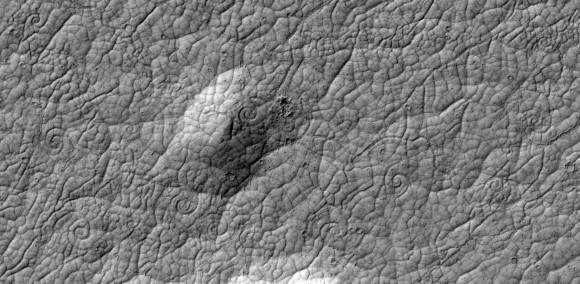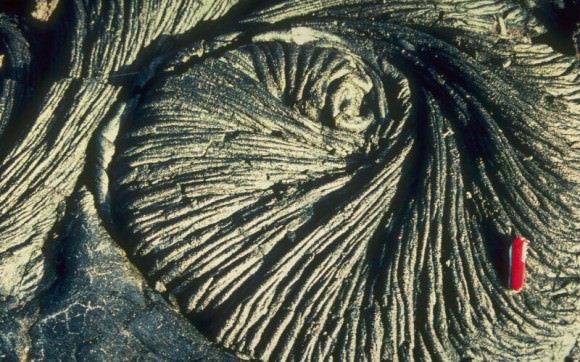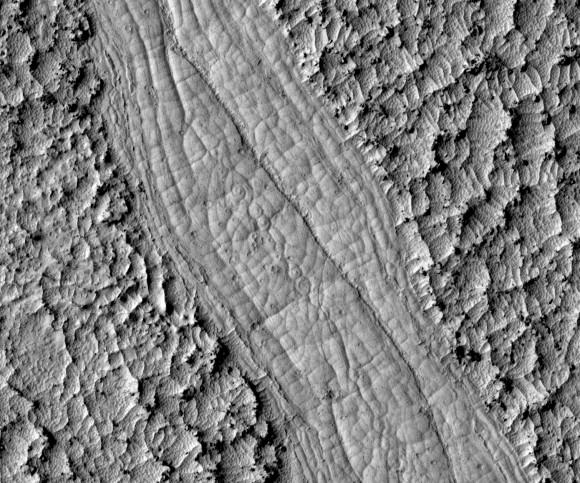
Cooling lava on Mars can form patterns like snail shells when the lava is pulled in two directions at once. Such patterns, rare on Earth, have never before been seen on Mars. This image, with more than a dozen lava coils visible, shows an area in a volcanic region named Cerberus Palus that is about 500 meters (1640 feet) wide. Credit: NASA
Strange coiling spiral patterns have been found on Mars surface by a graduate student who was doing what many of us enjoy: looking through the high-resolution images from the HiRISE camera on the Mars Reconnaissance Orbiter. Similar features have been seen on Earth, but this is the first time they have been identified on Mars. However, on Mars, these features, called lava coils, are supersized. “On Mars the largest lava coil is 30 meters across – that’s 100 feet,” said Andrew Ryan from Arizona State University. “That’s bigger than any known lava coils on Earth.”
The lava coils resemble snail or nautilus shells. Ryan has found about 269 of these lava coils just in one region on Mars, Cerberus Palus. 174 of them swirl in a clockwise-in orientation, 43 are counterclockwise, and 52 of the features remain unclassified due to resolution limits.

A small lava coil on pahoehoe flow, Kilauea Volcano, Hawai`i(see the pocket knife for scale.) Credit: W.W. Chadwick
On Earth, lava coils can be found on the Big Island of Hawaii, mainly on the surface of ropey pahoehoe lava flows. They usually form along slow-moving shear zones in a flow; for example, along the margins of a small channel, and the direction of the flow can be determined from a lava coil.
“The coils form on flows where there’s a shear stress – where flows move past each other at different speeds or in different directions,” said Ryan. “Pieces of rubbery and plastic lava crust can either be peeled away and physically coiled up – or wrinkles in the lava’s thin crust can be twisted around.”
Similarly, Ryan said scientists have documented the formation of rotated pieces of oceanic crust at mid-ocean ridge spreading centers.

Newer lava lying between two older plates of rough, hardened lava was still hot and plastic enough to form coils and spirals when the plates slid past one another. This image shows an area about 360 meters (1200 feet) wide in Cerberus Palus. Credit: NASA
But Ryan and the co-author on the paper, Phil Christiansen, Principal Investigator for the Thermal Emission Imaging Spectrometer on the Mars Odyssey spacecraft, are certain water has nothing to do with the formation of the lava coils on Mars.
“There are no known mechanisms to naturally produce spiral patterns in ice-rich environments on the scale and frequency observed in this area,” they wrote in their paper. “It is also unlikely that ice-rich patterned regolith, which takes decades to centuries to develop, could fracture and drift. The lava coils and drifting polygonal and platy-ridge lava crust described above are therefore most consistent with known volcanic analogs, rather than ice-related processes.”
These features are probably quite young, formed 1.5 to 200 million years ago in Mars’ late Amazonian period when the planet was volcanically active.
Source: Universe Today
No hay comentarios:
Publicar un comentario